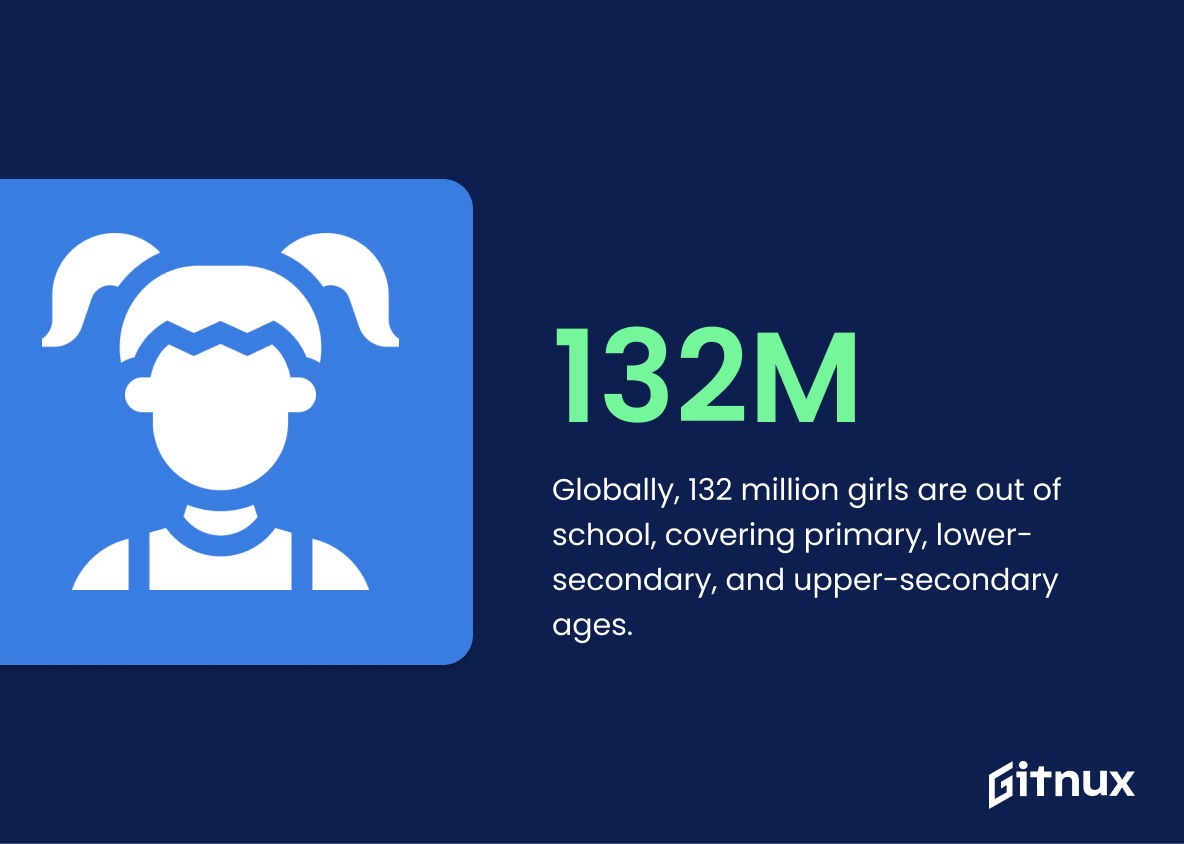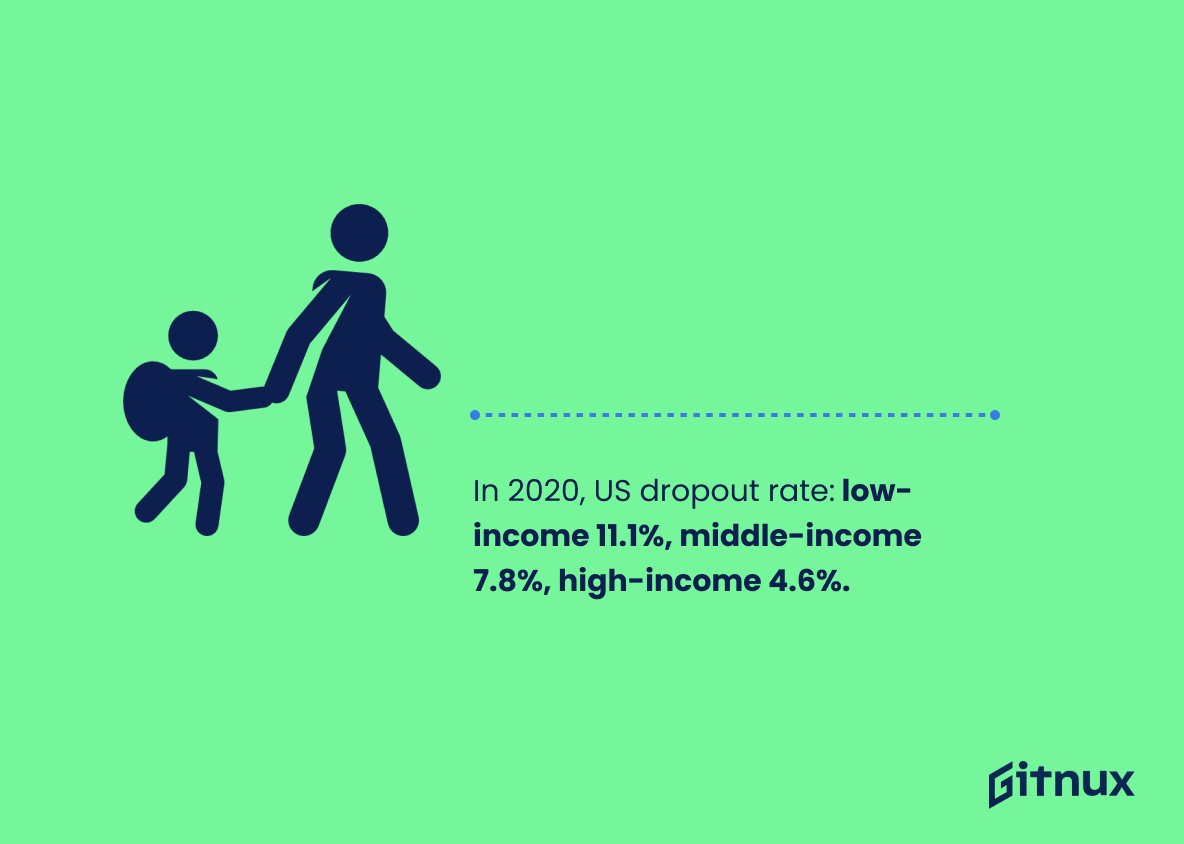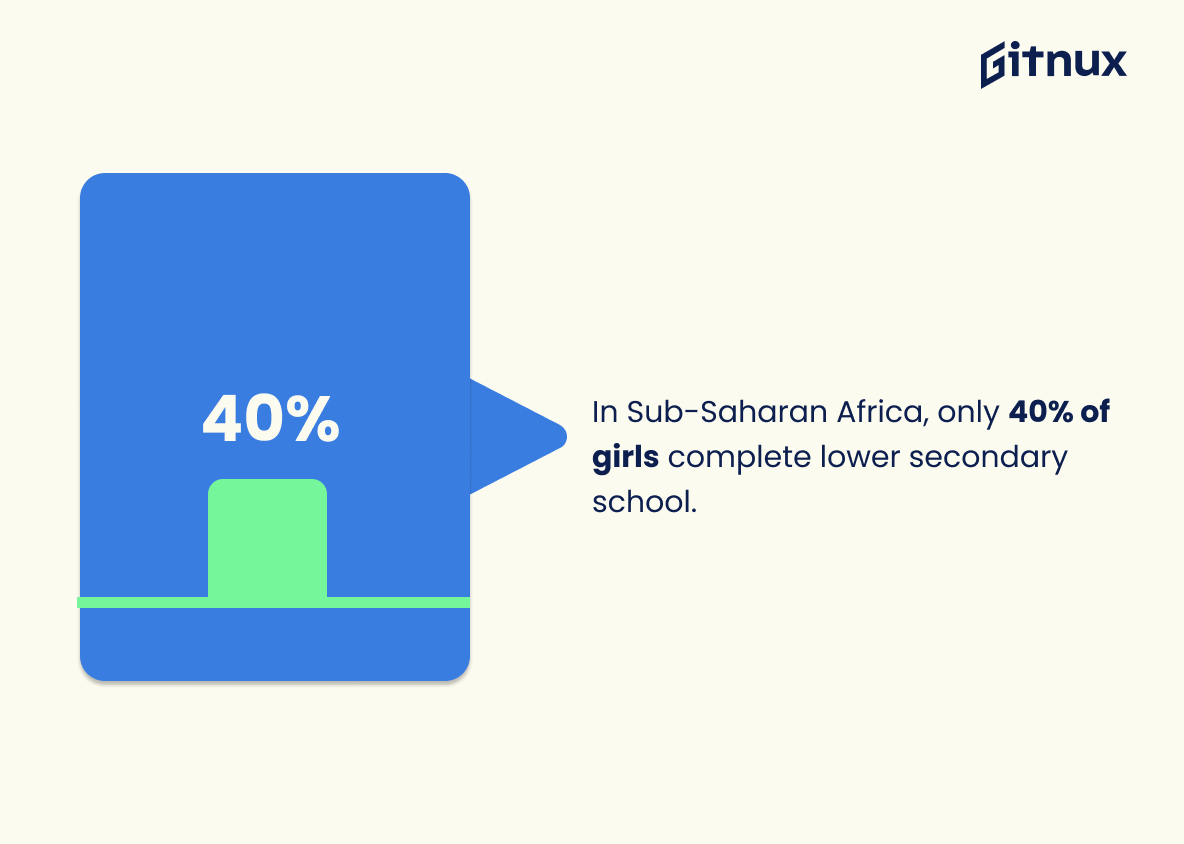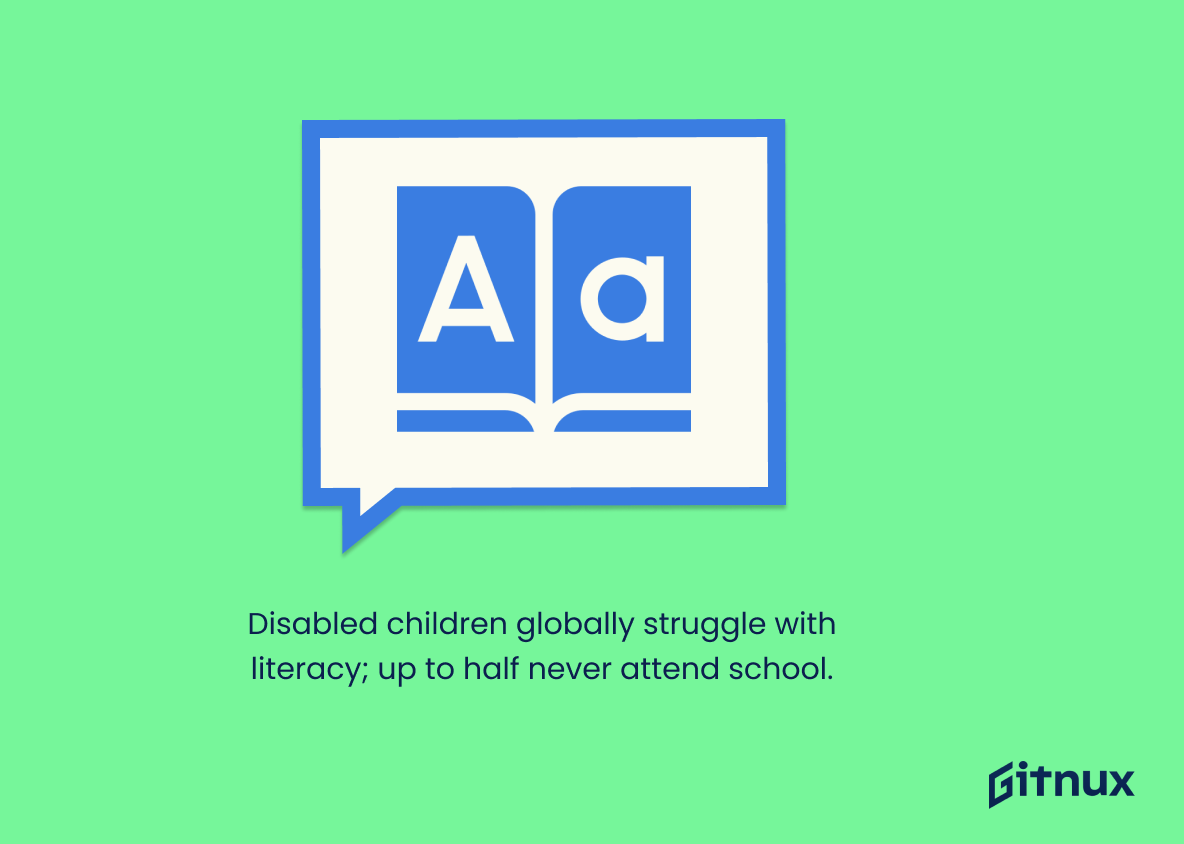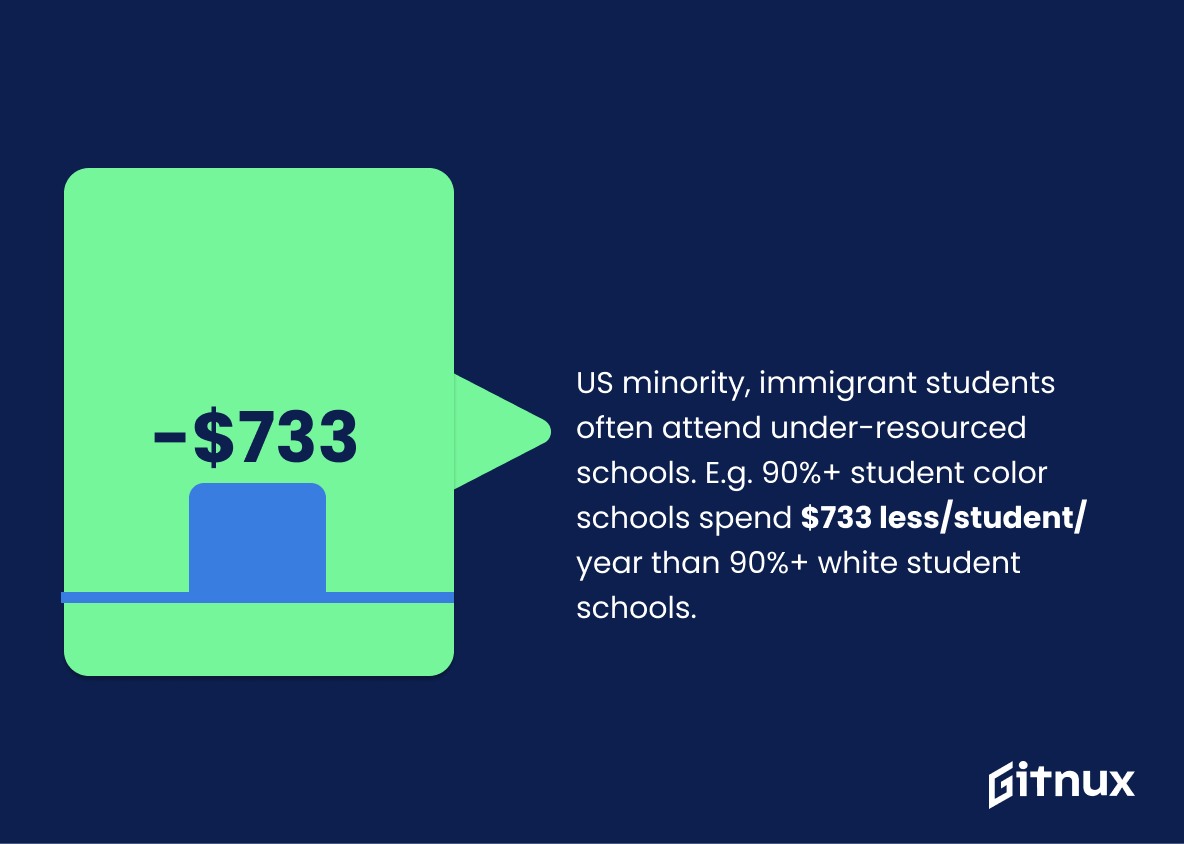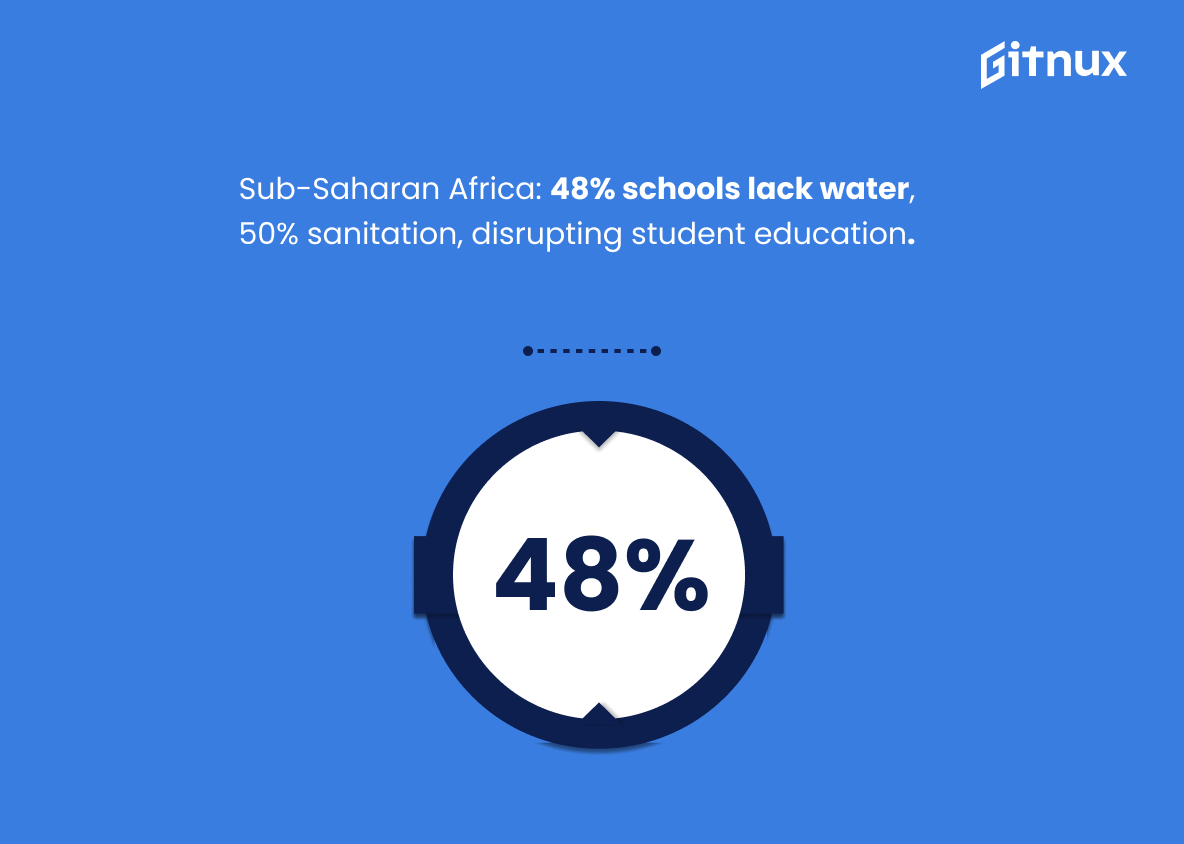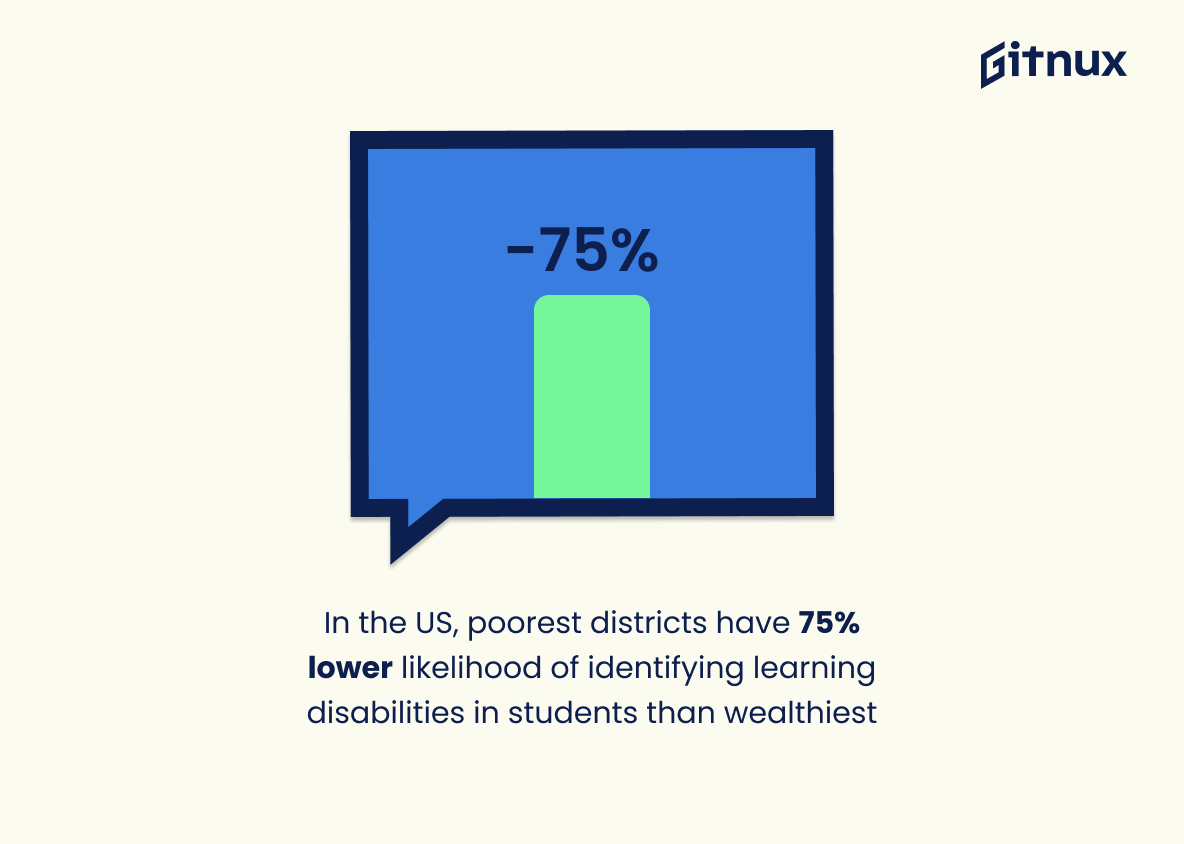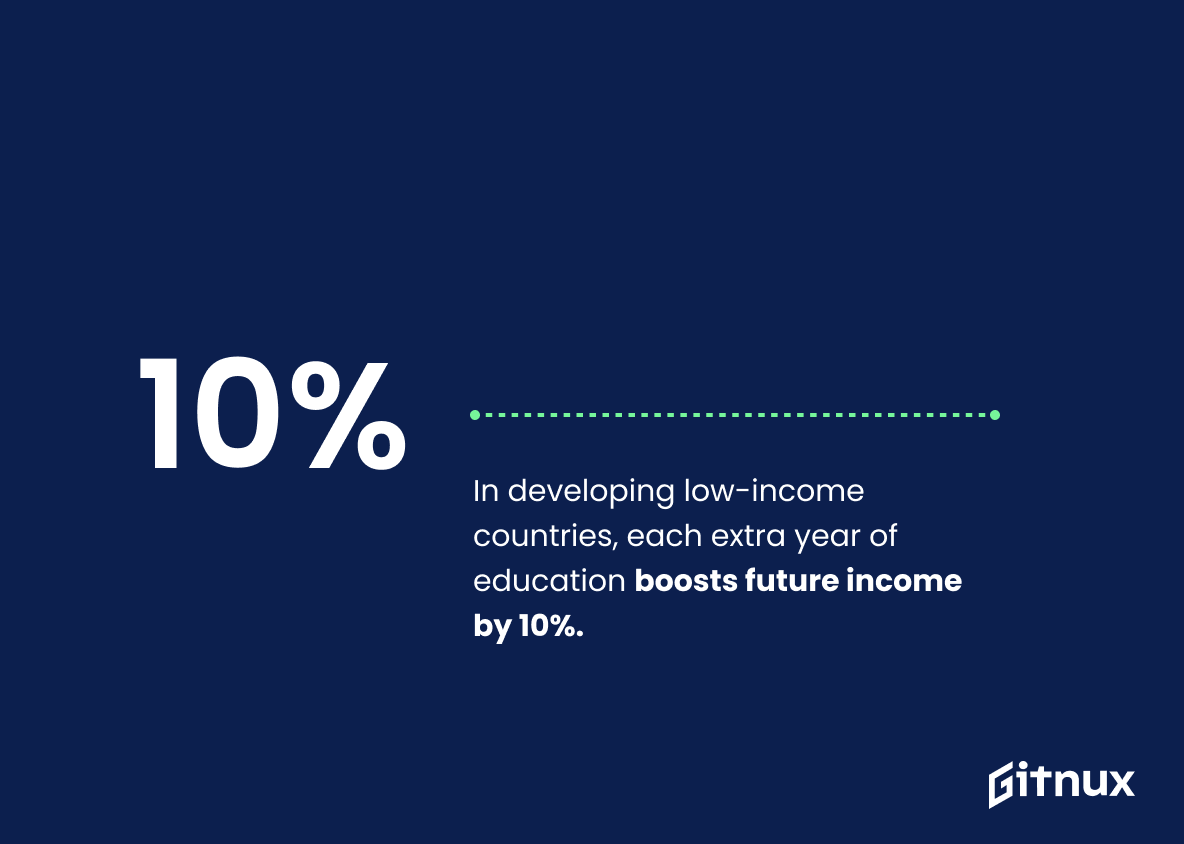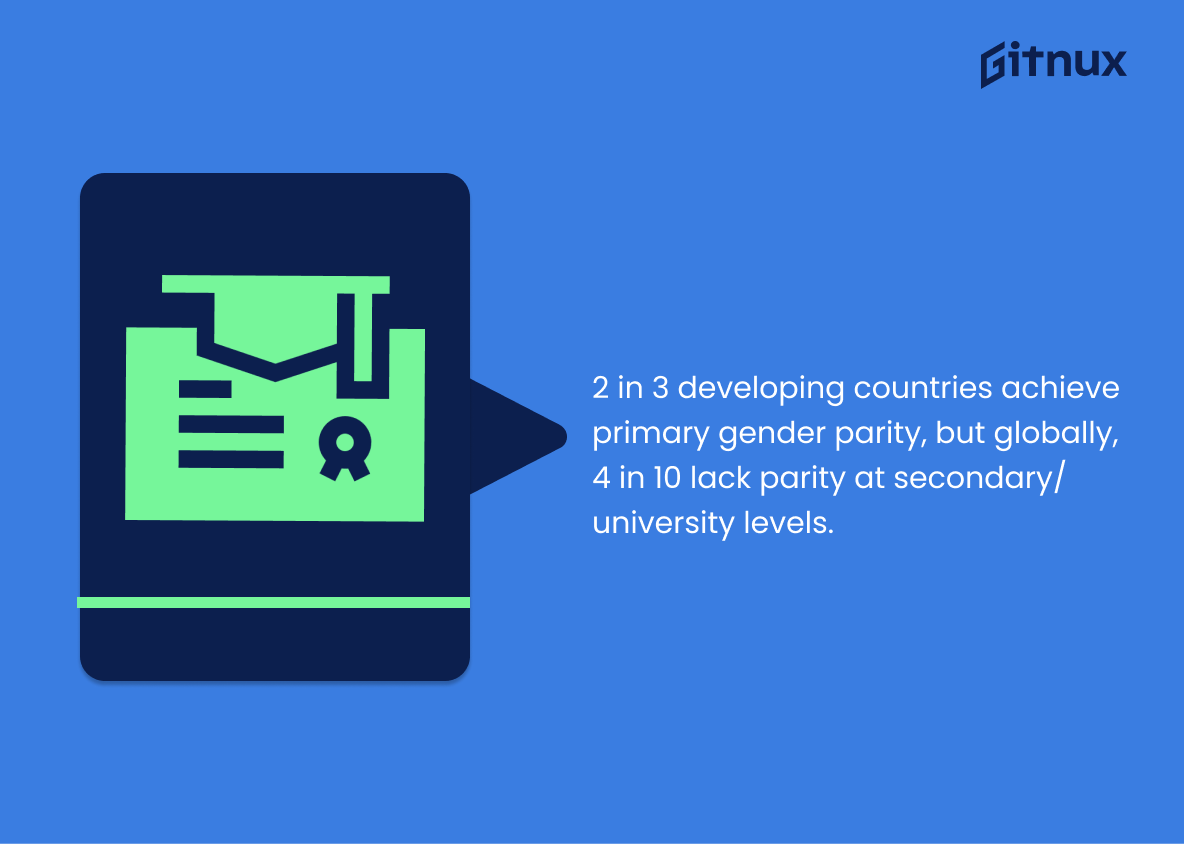In a world where quality education sets the foundation for future success, it’s alarming that not all individuals receive equal access to these pivotal opportunities. Education inequality is a global issue, pervading geographical boundaries, and more often than not, closely intertwined with socio-economic factors. This blog will delve into the complex landscape of Education Inequality, unearthing comprehensive statistics and evidence that underscore its pervasive nature.
Our journey will traverse various facets of this inequality – from the classrooms divided by socio-economic lines to the systemic biases that perpetuate these educational disparities. Join us as we shed light on the daunting numbers behind the scenes, fostering a profound understanding of the real challenges within present-day education systems.
The Latest Education Inequality Statistics Unveiled
Around the world, 132 million girls are out of school, including 34.3 million of primary school age, 30 million of lower-secondary school age, and 67.4 million of upper-secondary school age.
The revelation that approximately 132 million girls globally are deprived of education paints a stark image of the expansive education inequality that we find ourselves entangled in. For brevity’s sake, let’s delve deeper into these figures: there are 34.3 million primary school age girls, 30 million of lower-secondary school age, and 67.4 million of upper-secondary school age, not in education today. This disparity reflects clear and disproportionate obstacles for girls, impeding their primary, lower-secondary, and upper-secondary education.
In addition to stressing the immediate urgency to address the gender-based educational rights issue, these numbers also ring the alarm on the long-term consequences for societal development and economic growth, given that an educated female population has been linked with better health, lower fertility rates and improved quality of life for everyone. In every sense, these statistics are not mere numbers, but a call to action for equal educational opportunities worldwide.
In the United States, school districts serving the most students of color receive about $1,800, or 13%, less per student in state and local funding than those serving the fewest students of color.
Highlighting the striking financial disparity in our education system, it becomes overwhelmingly clear that school districts primarily serving students of color are dealt a significantly weaker hand, receiving about $1,800, or 13%, less per student in state and local funding. This palpable inequity, when seen in the harsh light of factual statistics, paints a vivid picture of systemic institutional divide within our nations’ educational system.
Undeniably, such a financial imbalance provides a stark commentary on the disparities that persist within the realm of education inequality, impacting the quality, resources, and opportunities available for students based on their racial background. This critical insight pierces to the core of ongoing conversations about educational reform and drives salient discussions on equitable funding allocation.
The dropout rate for students in the U.S. was highest in low-income families (11.1%) compared to middle-income families (7.8%) and high-income families (4.6%) in 2020.
Painting a vivid picture of the educational landscape of the U.S., this statistic is a stark signpost illuminating the intersections of income inequality and academic outcomes. It underscores a concerning trend: those from less privileged backgrounds, represented by low-income families, face an uphill battle in their educational journey, culminating in a disheartening dropout rate of 11.1%.
Contrast this with the middle-income families’ drop-out rate of 7.8%, and the stark discrepancy becomes more apparent. The echoes of this disparity grow louder when juxtaposed with the high-income families’ dropout rate – a mere 4.6%. The lower the household income, the higher the likelihood of students abandoning their education prematurely.
In a nutshell, these figures underscore a nuanced narrative about how unequal wealth distribution directly influences the access to and perseverance in education. In the context of any blog post dissecting education inequality statistics, it adds depth and provides a concrete example of the subtleties beneath the broader banner of inequality. It pushes the reader to question the systemic factors at play and ignites a dialogue about potential resolutions.
In Sub-Saharan Africa, only 40% of girls complete lower secondary school.
Peeling back the layers of educational inequality, we unearth a distressing narrative hidden in the statistic ‘In Sub-Saharan Africa, only 40% of girls complete lower secondary school.’ This alarming figure smudges the canvas of parity and growth in education. It accentuates how gender inequity intertwines with educational opportunities, casting a harsh spotlight on the educational gaps that girls, particularly in Sub-Saharan Africa, are made to grapple with.
Substantiating the needle-sharp urgency for reforms in access to quality education, this statistic adds weight to our argument advocating equal opportunities for all. In the panorama of discussions about education inequalities, highlighting such numerical truth allows us to confront and challenge the prohibitive barriers blocking the path of countless young girls seeking to reshape their future through education.
Indigenous peoples represent 5% of the world’s population, and they account for 15% of the world’s poorest, which has considerable impacts on their access to education.
When navigating the landscape of educational inequality, the statistic that Indigenous peoples, accounting for 5% of the world’s total inhabitants, disproportionately represent 15% of the planet’s most impoverished, triggers a profound echo. The far-reaching implications on their educational opportunities are undeniably evident. In a blog post dedicated to illuminating education inequality statistics, this figure unfurls a vivid tapestry of disparity.
It enunciates the silent cries of marginalized communities while serving as an urgent call-to-action for policy makers, educators, and global citizens to uplift the Indigenous communities from the yawning abyss of educational deprivation. With this data point, the narrative amplifies a jarring truth about global educational landscape and implores an empathetic understanding of how poverty and ethnicity intertwine to influence access to learning.
In lower-middle-income countries, only 4% of the poorest 20% complete upper secondary school.
Highlighting this number draws a stark and undeniably poignant picture of educational disparities. It underscores the fact that for the poorest fifth in lower-middle-income countries, access to the fundamental right of education remains largely elusive. Continued schooling, notably upper secondary education, is not just an end it itself, instead, it serves as a springboard for improved social mobility and economic empowerment.
A mere 4% completion rate among these individuals underscores an entrenched state of inequality within the educational landscape. Therefore, such a shocking revelation infused in a single statistic amplifies the urgency for targeted interventions bridging this educational divide.
Globally, children with disabilities are least likely to achieve basic literacy. As many as half of all children with disabilities have never attended school.
Highlighting this striking piece of information underscores the massive educational disparity experienced by children with disabilities worldwide. This detracts from the ideal of universal education, and encourages the reader to question the barriers unique to this demographic.
By shedding light on the fact that a significant portion of disabled children have never had the opportunity to step foot into a classroom, it underscores the immense challenges faced by these children in accessing what many consider a basic right – education. This stark reality paints a vivid picture of educational inequality, reinforcing the urgent need for feasible solutions to address this significant issue.
In the U.S, children from high-income families are seven times more likely to complete a bachelor’s degree by the age of 24 than children from low-income families.
This compelling and insightful statistic presents a stark image of the diverging paths in education brought about by the shaking hands of income inequality. It highlights the disparity that creates an almost insurmountable ladder in the hands of those with less financial advantage. The statistic brings to fore the educational inequality landscape in the U.S., serving as a call to arms to level the playing field and bridge the economic chasm that is preventing many promising minds from reaching their highest academic potential.
Validating the importance of this conversation further, the metric underlines a systemic undercurrent pulling back a significant part of the future workforce from leveraging the benefits and opportunities of higher education. Conclusively, it is an alarm bell heralding a wake-up call for policymakers and thinkers to address this matter, so every child – irrespective of their economic background – has a fair shot at fulfilling their academic dreams.
Minority and immigrant students are more likely to attend under-resourced schools in the U.S. For example, schools with 90 percent or more students of color spend $733 less per student per year than schools with 90 percent or more white students.
Highlighting the stark educational resource disparity emphasized by this statistical data lays bare the undeniable systematic inequality within America’s educational landscape. By allocating fewer resources per student in schools populated predominantly by minority and immigrant youngsters, a clear picture emerges of a deeply unequal system. This type of financial discrepancy leads to an educational fissure, with prosperity on one side and hardship on the other.
Such an imbalanced allocation of resources not only poses challenges in delivering quality education but also in shaping the future prospects of these students. In a blog post about Education Inequality Statistics, this data becomes a call-to-action echoing loudly, underpinning crucial discussions about the pressing issues of racial disparity, social justice, and inclusivity in our educational system. An awareness and understanding of this statistic is paramount; it encourages introspection, inspiration for change, and sparks a discourse for equanimity in education.
48% of schools in Sub-Saharan Africa lack access to basic drinking water, 50% lack basic sanitation, and about 50% lack handwashing facilities, causing disruption to the education of students.
The power of this statistic can be felt like a punch in the stomach, portraying a picture where almost half of Sub-Saharan Africa’s schools are devoid of basic drinking water access. Rapidly, the narrative intensifies, revealing that half these schools also grapple with basic sanitation woes and equally lack handwashing facilities. The implications? Interruptions to the acquisition of knowledge by students, forming monstrous obstacles against the quest for education.
In the broader context of education inequality, this statistic stands as a stark reminder of the disparity. It sheds light on the overlooked yet basic needs that educational institutions demand in order to function correctly and continuously. In stark contrast to better-equipped schools in other regions, such precarious infrastructural conditions impede the learning process significantly. It’s not just a statistic. It’s a spotlight on a profoundly disturbing imbalance in the foundations of our education systems worldwide.
Out of an estimated 260 million children not in school in 2018, 70% were girls.
Highlighting the fact that out of an estimated 260 million children not in school in 2018, 70% were girls, underscores a significant gender disparity in global education. This raw figure brings to light the haunting shadow of education inequality, particularly the skewed disadvantage faced by girls. Throwing a spotlight on this glaring gender imbalance helps bolster the narrative of education inequality, fortifying the urgency to adopt scalable solutions for greater equity in access to education.
In the U.S., the likelihood of a student being identified as having a learning disability is 75 percent lower in the poorest districts than in the wealthiest.
This compelling statistic punctuates our discourse on education inequality and casts a stark light on the extensive disparities that exist within educational systems across varying socioeconomic strata. The unlikely diagnosis of learning disabilities among students in poorer districts undoubtedly underscores the very real deficits in resources, attention, and specialised consideration within these underserved areas. To put it plainly, wealthier districts are better equipped to detect and address learning disabilities, allowing students to receive the necessary support for their academic growth.
In glaring contrast, those in poorer districts often slip through the cracks, resulting in overlooked potential and unfulfilled academic prowess. This paints a worrisome picture of the unfortunate educational landscape, where a student’s zip code may be a determining factor for educational quality and achievement. In a country that prides itself on equal opportunity for all, this statistic reminds us of the urgent need to bridge this disparity and seek equity-centric solutions for our educational framework.
In developing, low-income countries, every additional year of education can increase a person’s future income by an average of 10%.
The statistic underlines a profound truth: education isn’t just a matter of knowledge or personal development, it directly impacts individuals’ financial potential, particularly in developing, low-income countries. Allowing its paints a powerful picture of the economical consequences of education inequality. It demonstrates that an uneven access to education isn’t merely a question of fairness or ethics – it’s an issue that directly shapes the wealth and prosperity of individuals, communities, and entire nations.
If one year of schooling can mean the difference between a future of financial struggle and a 10% higher income, then it’s evident that equal access to education is not just a moral obligation, but an economic necessity.
Two in every three countries in the developing regions have reached gender parity in primary education, but globally, 4 out of 10 countries have not achieved gender parity in education at secondary and university levels.
Delving into the realm of education inequality, the striking—albeit paradoxical—insight that two out of three developing nations have achieved gender parity in primary education yet, on a global scale, a staggering 4 out of 10 countries fail to replicate this balance at secondary and university stages, casts a harsh spotlight on the regional and educational level disparities. This statistic serves as a wakeup call, a siren bringing to the forefront the reality of education’s gendered dimensions, reminding us that the road to universal gender equality in education, though paved with progress, is still littered with formidable barriers to overcome.
It further highlights the urgency to go beyond the façade of primary education statistics and delve deeper to expose the embedded inequities restricting equal access to education at higher levels. Furthermore, it underscores the criticality of increasing focus on secondary and tertiary education in our pursuit for genuine, all-encompassing gender parity in global education.
Conclusion
Education inequality remains a considerable challenge globally, affecting millions of children and young adults. The statistics reveal a widespread disparity based on race, gender, socioeconomic status, and geographical location. Addressing this issue requires the concerted efforts of governments, educators, parents, and policy-makers.
We cannot hope to achieve substantial global progress without ensuring every child, regardless of background, has equal access to quality education. By understanding and addressing education inequality, we hold the key to unlocking a brighter and more inclusive future for all.
References
0. – https://www.www.light-for-the-world.org
1. – https://www.www.globalpartnership.org
2. – https://www.edbuild.org
3. – https://www.pelosi.house.gov
4. – https://www.www.npr.org
5. – https://www.www.unfpa.org
6. – https://www.www.un.org
7. – https://www.unesdoc.unesco.org
8. – https://www.nces.ed.gov
9. – https://www.www.unicef.org
10. – https://www.www.epi.org
